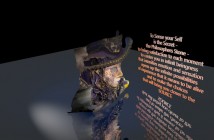Mark’s approach (based on the unfinished manuscript with Stephan Schwartz).
“Mathematician is the one who can see analogies. A good mathematician is the one who can see analogies between analogies.” – a folks saying.
1. Motivation: before doing any formalization, need proper conceptualization!
Aristotle’s mechanics was very complicated and obscure. After Newton discovered a proper conceptualization, he introduced his formalization: his 3 laws, + the gravitation law. And mechanics became very simple.
Similarly, Ptolemy’s model for planet’s movement was very complicated and obscure. After Copernicus and Galileo discovered a proper conceptualization, a simple formalization was introduced.
Scientific models are mechanistic and reductionist. They assume the causality principle, use standard logic, and are, typically, based on high quality reproducible experimental data. And these models typically offer a plausible mechanism to account for the data. They basically follow the Cartesian analytic method, the view of scientific explanation as decomposing the problem into simple parts to be considered individually, which could then be re-assembled to yield an understanding of the integrated whole. Mathematical models are a special case of Scientific models.
Holistic models are non-reductionist. They implicitly assume the thesis that a whole is more than a mere aggregation of its parts. They rely upon the method of intuition and direct experience, rather than rational explanation or empirical experiment, satisfied with a non-rational apprehension of un-analyzed whole.
· Is it possible to use our standard scientific method to develop models that account for the reality captured by the second “non-scientific” holistic models?
· Does there exist high quality reproducible experimental data that would allow one to start developing a unified theoretical model?
· What would be an appropriate scientific methodology which would allow one to start developing such a unified theoretical model?
Kiran : We have to re-think all the definitions also of so called “Holistic models” as they have been repeated without thinking for too long. For example the over and over told concept “a whole is more than a mere aggregation of its parts”… for example applying this concept to a HUMAN makes the unquestioned and unrealized assumption that “a human” is “a whole” but really once you define “a whole” separate from the “All and everything” then you are actually not a holistic thinker. That “The whole is more than its parts”… is actually NONSENSE as of course “The whole is exactly the totality of its parts… and not one thing more” but what we want to say is that
“The whole is more than what we think its contributing parts are”.
Kiran : We are confused and do not get one step further in all the “hard” science that has been done since so long because we start from the wrong end “We assume we are one and individual and separated from other beings and objects and we do make scientific experiments to see if there is a connection other than physical and energetic connections” but in fact we have to go the other way round
“To assume there is a connection of everything and we can find ways to assess the degree of connection of every part”
this is what I call resonance and that is done with the CoRe system.
K: This approach is not satisfying to the mind that wants to have “hard and clean” data as all is soft and intermingled and mechanical interaction is the exception and not the rule…. But all our concepts of “knowing how something works” is “mechanistic”.
K: The way out is not to hope for “models” but to built and expand our world-experience based on statistical experiences which means to know for example “if 100 people go to Mac Donald frequently” 60 of them will have serious health problems in 5 years. To give up the hope for a model that would explain “Why they get sick” and “Why the other 40 stay healthy”.
K: In fact “Models” will be a concept of the past as we see their limitation and their great potential to mislead the majority of people …. As most don’t see the inbuilt limitations of a Model…. Its “definition range” and this has fooled not only common people but also most physicist.
K: The “statistical” approach is the way we learn most things anyway like “to look in the rear-mirror when changing lanes” we don’t need a model to understand its value. We grasp the “statistical” method with the right brain that is seeing the totality or at least a much larger scope and is perceiving degrees of importance rather than individual causes.
K: Certainly all the remote viewing and other experiments of “psychic” effects don’t interest me at all because “Those who know need no prove and those who cannot know will not be convinced by any proof”
K: What interests me is to improve the CoRe as a tool that helps us to see the influences at a given moment that left unnoticed would force nature to cause disease or tragedy to make us aware of them.
K: But Mark please tell me what you mean with your initial
Proverb A good mathematician is the one who can see analogies between analogies. as this is the direction I want this discussion to go.















